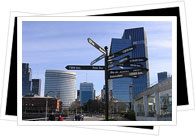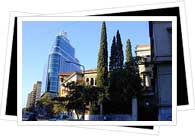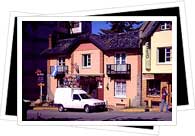
Architecture in Argentina is made up of a diverse collection of styles and designs which paint a picture of Argentina's history, culture, geography and even weather conditions!
The Spanish colonial era has left behind many remnants of a thriving colonial past and whilst in many areas these buildings have been destroyed over time, there are still some good spots around Argentina to get a feel for what it was once like. The Northwestern region of the country has the largest concentration of well preserved colonial architecture, in particular Salta. This is a beautiful place to take in some truly colourful and majestic buildings. Of special interest is the San Francisco convent with its enormous tower and red and gold paintwork that was built in the early nineteenth century by Spanish architect, Fray Vicente Muñoz. The neocolonial Italian influenced Cathedral was built between 1858 and 1882 after the original catedral was destroyed in an earthquake. The wildly elaborate building is eye-catching with its pink and yellow painted facade and excesively ornate interior it is a splendid example of lavish neocolonial style. Nearby Jujuy city also has some well preserved colonial buildings in the centre, however a history of earthquakes has meant that what remains stands side by side with modern additions. Corrientes in the El Litoral Region is one of the country's oldest cities and has avoided modernisation at all costs in order to preserve its attractive colonial town centre.

Córdoba is also a great place to be in a buzzing, modern city without losing the traditional architecture. Here you can see some of Argentina's best colonial buildings, notably the 200 year old Cathedral (the oldest in the country) and the eighteenth century Cabildo. In comparison, Buenos Aires is particularly short on colonial remains and is better for admiring the flashily designed twentieth century edifices which dominate the skyline. Here you will find modern, glass fronted buildings with sleek lines and innovative concepts, influenced by the modern styles of architects like Swiss-born Le Corbusier. This modern style is also very much apparent in the city of Rosario. However, Buenos Aires' southern neighbourhoods like San Telmo have examples of old colonial mansions which are now in a state of disrepair. La Boca is famous for its traditionally painted multi-coloured shanty-style houses which never fail to charm the visitor. The northern neighbourhoods of Palermo and Recoleta are the best places to see some well maintianed colonial mansions where the aristocracy continue to live to this day. The buildings around the Plaza de Mayo, like the Casa Rosada are also good examples.
Argentina's West Region has been effected most heavily by earthquakes meaning that you are likely to see a different style of building in this area. Mendoza in particular is a perfect example of where function comes over form and is laden with low-rise structures designed to live through tremors. Similarly, La Rioja lost practically all its original building work to earthquakes, however, it has been more sensitively rebuilt using local materials and European designs.
Argentine Patagonia has some other very interesting architectural delights to visit. Most notably, Bariloche and nearby San Martín de los Andes are characterised by their German and Austrian architecture from the late nineteenth century. The traditional houses are charming with wooden slatted walls and bright red roofs. Bariloche's beautiful Cathedral and Centro Cívico made of wood and stone are both landmark buildings and were designed by Argentina's most famous architect, Alejandro Bustillo (1889-1982).

Further south, Patagonia has some more architectural delights, most notably in the Chubut Valley. Here, Welsh settlers arrived in the mid-nineteenth century and brought with them traditional welsh architectural styles which are unique in Argentina. Over thirty chapels can be found throughout the valley, and the villages (particularly Gaiman) are filled with beautiful little cottages.
The Jesuits also left some interesting architectural remains all over the country, the most impressive of which is found in San Ignacio Mini (El Litoral Region). The buildings, which date back to 1696 are made from beautiful dusky red sandstone are representative of the Guaraní baroque and are some of the most intact Jesuit ruins one can visit. The big blocks of stone are carved with intricately detailed pictures of mythological creatures and local wildlife.